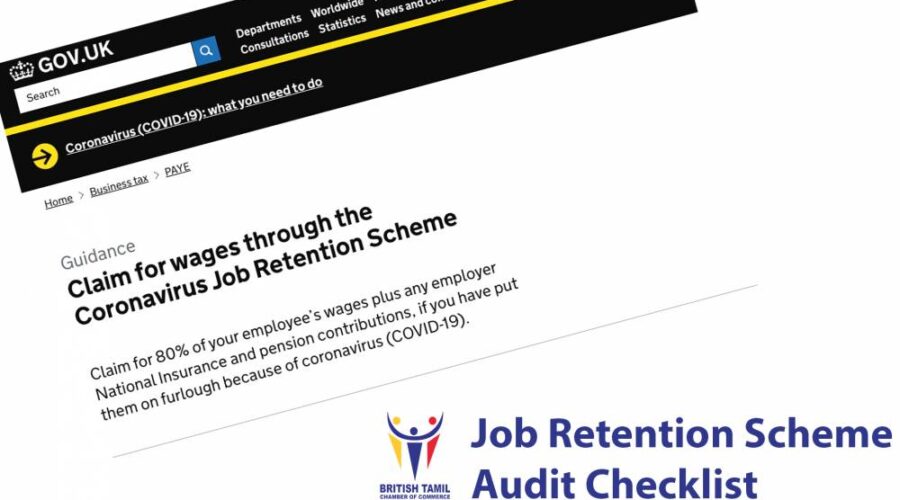Coronavirus Job Retention Scheme Audit Checklist
- By admin
- Comments are off
Furlough Agreements (FA)
- Has each FA been signed off and dated by both the business and the employee?
- Was there a start date reflected on the FA?
- Was there an end date reflected on the FA?
- Did the furlough in each case last for a minimum of 3 weeks?
- Where there was a specific end date, did the business claim beyond that date?
- Is the FA consistent with employment law?
- Where the furlough started pre the date the FA was signed, is there evidence to support that?
- Where the employee was furloughed more than once, is there a FA in place for each occasion?
- Was each furloughed employee (FE) on the PAYE payroll and an RTI payment submission regarding them sent to HMRC on or before 19th March 2020?
- Where the business re-employed an ex-employee, were they on the PAYE payroll and an RTI payment submission, regarding them, sent to HMRC on or before 28th February 2020?
- Where a new employer is involved, were the FEs transferred across under the TUPE/Business Succession rules after 19th March 2020?
- Is there any evidence to suggest that FEs carried out work for the business or any organisation linked with that business during the furlough period?
- Where a FE has taken up another ‘temporary’ employment during the furlough period, check that the employment contract allows for this.
Directors furloughed
- Has the company formally adopted the decision to furlough? (e.g. Board minute)
- Is there a signed and dated FA in place between the company and the director?
- Is there evidence to show that the director only carried out directorial duties in line with the Companies Act 2006?
- Is there evidence to the contrary?
Salaried member of an LLP furloughed
- Was the LLP Members agreement varied by way of a formal decision to reflect the fact that the member should do no further work for the LLP in the furlough period?
- Check that the ‘salary’ claimed is based upon the profit allocation of the member, excluding any amounts arising from the LLP’s performance and their own performance.
The claim
- Where the employer was paying the FE more than the 80% under the CJRS, check that they only claimed for the 80%?
- Check that the maximum claim limit of £2,500 was not breached.
- Was, at least, the NMW/NLW/AMW paid for training periods during the furlough period?
- Was only the 80% of the employees deemed wage claimed under the scheme and the excess to meet the requirements of 3) above met by the employer?
- Check that the employer did not claim both under the CJRS and the Statutory Sick Pay (SSP) arrangement for an employee for the same period?
- Check that the employer made no claim under CJRS for employees who were on reduced pay or reduced hours.
- FEs on fixed term contracts, check that the furlough period covers simply the term of their contract.
- Where the FE opted out of the auto-enrolment pension scheme, check that no claim was made under the CJRS for pension contributions.
- Check that no discretionary payments/non-cash payments/benefits in kind/salary sacrifice arrangements were reflected in the claim.
- Where the FE was a full-time or part-time employee on a fixed salary, check that the 80% claim was calculated correctly taking account of:
a) When they were furloughed.
b) Either the pay as at 28th February or the last pay during the period up to and including 19th March 2020.
c) Whether the FE started employment in that last pay reference period.
d) Whether the daily, weekly or monthly rate was correctly applied for the particular pay reference period. - Where the FE was on varied pay, check that the 80% claim was calculated correctly taking account of:
a) When they were furloughed.
b) Whether they were employed post 5th April 2019.
c) Whether the employee was furloughed partly through a pay reference period.
d) Whether the average pay over 2019/20 tax year or the monthly pay for the equivalent month the previous year was used correctly. - Check that the employers national insurance claim was calculated correctly, taking account of:
a) When they were furloughed.
b) The interaction of the employers’ allowance with the claim.
c) Directors on the annualised earnings basis.
d) Employees who fall within the NI Table categories H, M and Z. - Was the correct amount of employers pension contribution claimed, taking account of: a) When they were furloughed. b) The employer’s minimum mandatory pension contribution percentage. c) The lower level of qualifying earnings limit.
- Where the FE took holidays (including Bank Holidays) during the furlough period were they paid in line with the Working Time Regulations and the claim made in line with the HMRC Guidance Notes?
- Where an excessive claim was made, was the excess returned to HMRC?
- Has the grant been treated correctly for tax purposes in the accounts?
Payroll
- Was PAYE operated on the 80% amount and paid over to HMRC within the required time frame?
- Was the employer pension contribution claimed through the CJRS paid across to the pension company?
- Was the FE paid in accordance with the terms of their contract irrespective of whether the business had received the Government grant at that time?
- Check that no fees or other costs were deducted from the FE’s wages in respect of the CJRS claim?
- Has a comparison check been made against what was run through the payroll and what was claimed through CJRS for the claim period in question, to see if there are any glaring irregularities?
Administration
- Has a note or a printout been kept of the claim reference number as regards each claim?
- Has copies of all the calculations as regards every FE for each claim period been kept?
- Has a copy of the HMRC Guidance records been kept to support the justification for the calculations made.
email us on info@tamilchamberofcommerce.org.uk to get an up to date checklist in word format and any other additional support from BTCC experts.



